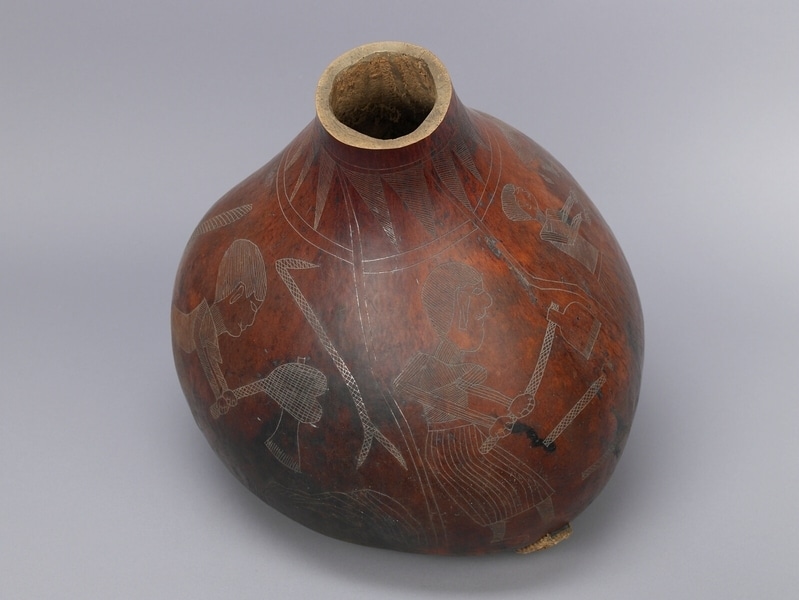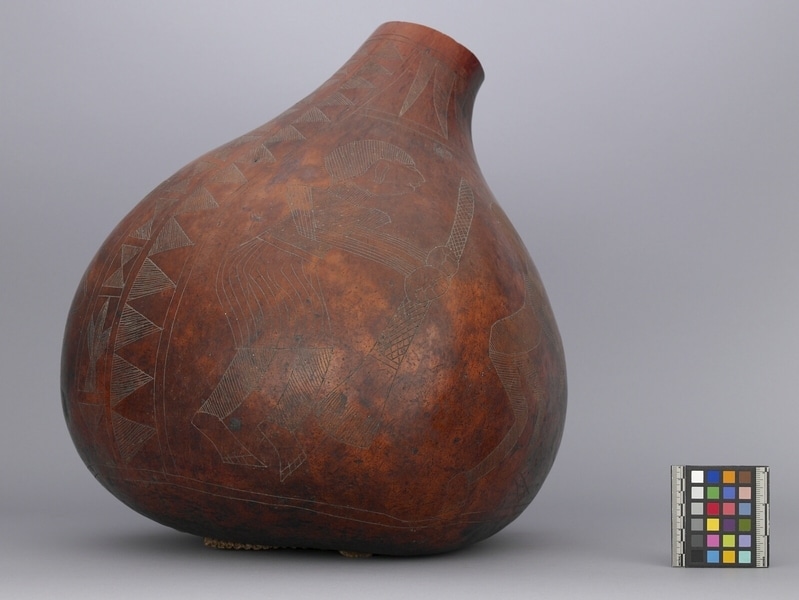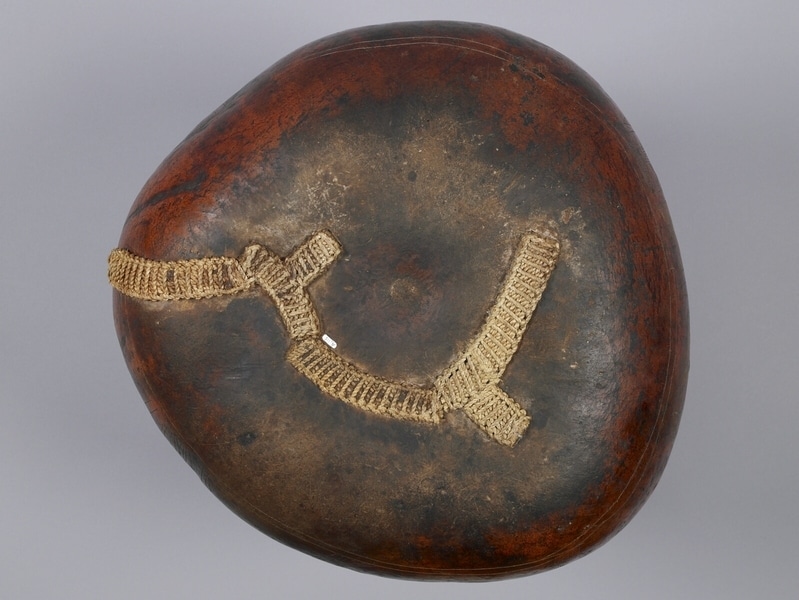Container Item Number: Aj115 from the MOA: University of British Columbia




Description
Large brown, semi-brown yellow in areas, gourd container. Slants to one side, has no lid, and is unfinished at the mouth rim. Incised all over with human figures shown in cultivation and farming with two cows, as well as geometric designs of plants and abstract motifs. All crosshatched or lined.
History Of Use
Calabash gourds grow in many shapes and sizes. Their purpose depends on the natural shape of each shell: food bowls, ceremonial bowls, drinking cups, well buckets, water pots, travelling containers, churns, sounding-boards for musical instruments, water pipes, snuff boxes, and medicine cases. Some are simply used for decoration. Previously gourds were used in rituals associated with myths and legends, which were incised with symbols. They are usually carved by men and are grown in home gardens. Most patterns are geometric motifs of plants, animals, household objects, and humans. Artists also try to blend the patterns with contemporary events. Gourds turn dark with age and use. Usually an owner’s favourite one is considered for its form, decoration, age, patterns, and repairs. This art form had declined by the 1920s but was later revived.
Cultural Context
storage; transportation
Specific Techniques
Carved only by specialists, who use heated knife blades, awls or smaller tools to scratch areas, then rub with dark soot to stain incised areas.
Item History
- Made by Peter Nzuki (Maker) in Kenya before 1978
- Collected during 1978
- Owned by Marta Friesen before March 3, 1981
- Received from Marta Friesen (Seller) and Museum of Anthropology Shop Volunteers (Funding source) on March 3, 1981
What
Who
- Culture
- Kamba
- Creator
- Peter Nzuki (Maker)
- Previous Owner
- Marta Friesen
- Received from
- Marta Friesen (Seller) and Museum of Anthropology Shop Volunteers (Funding source)
Where
- Holding Institution
- MOA: University of British Columbia
- Made in
- Kenya
When
- Creation Date
- before 1978
- Collection Date
- during 1978
- Ownership Date
- before March 3, 1981
- Acquisition Date
- on March 3, 1981
Other
- Condition
- good
- Current Location
- Case 100
- Accession Number
- 0705/0009